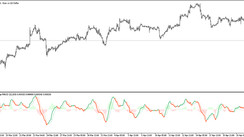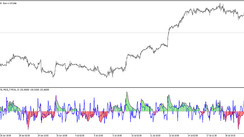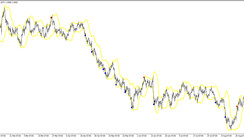Today, the focus of traders is the publication (at 12:30 GMT) of the US Department of Labor report with monthly data on the state of the labor market in the country. Market participants will carefully study this report to draw their conclusions about the prospects for the Fed's monetary policy and, accordingly, the dollar. The report is expected to point to 391,000 new jobs and a drop in unemployment to 3.5% from 3.6% in March. Hourly wages are forecast to rise another +0.4% in April. The data speaks of a continuing improvement in the US labor market, also pointing to the stability of the US economy, which, theoretically, should support the dollar quotes.
US weekly jobless claims released on Thursday slightly upset investors, pointing to an increase in initial jobless claims. In the week of April 24-30, it rose (for the first time since the beginning of April) by 19,000, reaching 200,000 against 181,000 the previous week. At the same time, the number of secondary claims for unemployment benefits, which reflects the total number of Americans receiving payments from the state, fell to 1.4 million in the week of April 17-23.
And yet, benefits claims have remained near historic lows since the end of 2021, one of many signs of a strong labor market, rapid job creation and strong demand for workers.
A strong labor market, along with rising GDP and inflation, is a key factor for the Fed in its decision to raise interest rates. The US dollar continues to dominate the market, primarily against the backdrop of the Fed's plans to aggressively tighten monetary policy, while other major global central banks will lag behind the Fed in the pace of this process.
This, in particular, applies to the RBA, which this week raised interest rates for the first time since November 2010. To contain inflation, which reached a 20-year high (in the 1st quarter, total annual consumer price inflation in Australia was 5.1%, and core inflation was 3.7%), the rate was increased by 0.25%, to 0. 35%, which also beat the forecast of a 0.15% increase. In addition, the RBA signaled the likelihood of a further increase in the coming months. Market participants are now pricing in an increase in the RBA interest rate to 2.5% by the end of this year.
The Australian dollar received an impulse to grow after the meeting of the RBA. However, the growth of the AUD/USD pair turned out to be short-lived.
Today it is falling again, currently trading near the 0.7100 mark.
The DXY dollar index, meanwhile, today made an attempt to break through the local resistance level of 104.00, at the same time rising to a new 2-year high of 104.09. If the official data of the US Department of Labor, published today, are disappointing, then this is likely to be followed by a weakening of the US dollar and the growth of AUD/USD. However, the weakening of the US dollar is likely to be short-lived.

Economists expect it to strengthen further, while Fed officials are signaling a more aggressive approach to monetary tightening. Even if the data from the labor market turns out to be weaker than the forecast, they most likely will not stop the Fed leaders, who, first of all, seek to curb the rapidly rising inflation in the United States.





